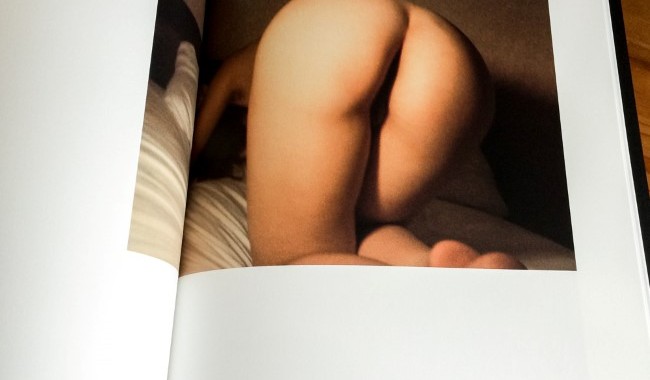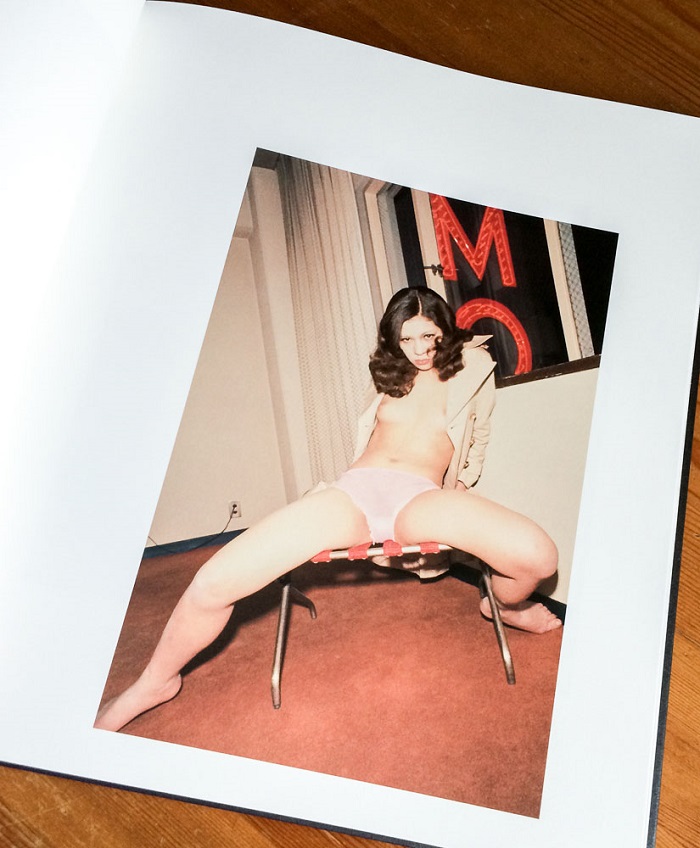Mirage swings between the dynamic of a lover’s intimate photographs and those of a lonely stalker.
By Owen Campbell, ASX, March 2015
The standard, reflexive way of referring to Mirage (2013), White and Vinegar (2012), and Dazai (2014) would be “three books by the photographer Daido Moriyama, as well as a story by Osamu Dazai.” The reality is that the printing, typography, binding and paper are of such conspicuously high quality and assemblage that it’s more accurate to describe the books, published by MMM, and imprint of Bookshop-M, as they do, as a collaboration between photographer Daido Moriyama, art director MATCH (Satoshi Machiguchi) and curator HISAKO (Hisako Motoo).
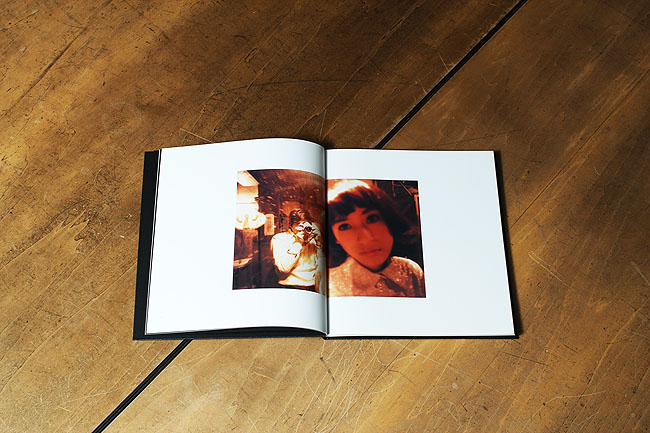

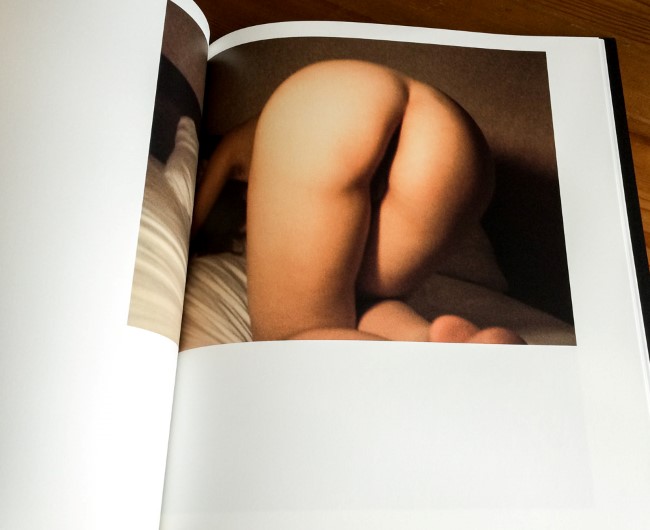
MIRAGE
Shot for Japanese Playboy, private S&M collectors and himself, Mirage is a collection of Moriyama’s unpublished color work from the 1970’s. Rich and diverse, Mirage swings between the dynamic of a lover’s intimate photographs and those of a lonely stalker. Rose-hued warmth is not what one typically thinks of in response to the name Moriyama, but diffused sun and the glow of healthy skin tones combine to give Mirage the dominant color tone of warm, glowing peach. The images are as delicate as a blurred woman naked in a field of tall grass, or the fingernails of a hand cupping together, shot in tight focus so that the fingers towards the light and background begin to blur and those in the foreground appear as solid blocks of shadow.
And then there is what you do think of when you hear the name Moriyama: more naked women in less rosy settings, bondage. More curiously are the women shot from behind, sometimes in public, but with a focus on one particular area – the back of the knee. Other images are as sharp as neon signs at night or a toddler wandering the dark streets alone, lit up by a flash, or a woman spreading her legs in a beige and ochre motel room. Photos shot from cars have the look of stills from a private investigation and all that entails, deception, surveillance, a jealous husband, the ominous threat of far-away violence.
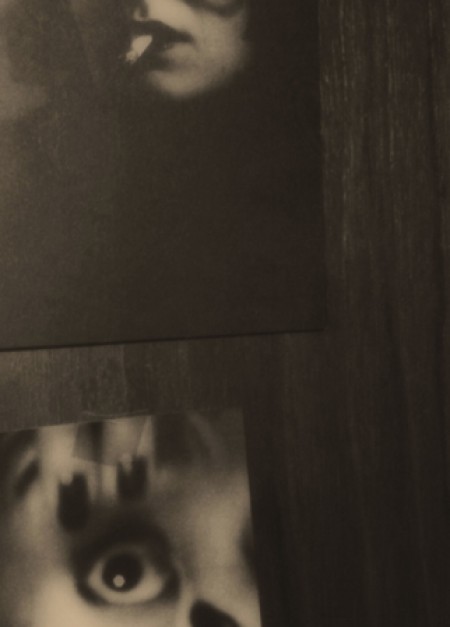
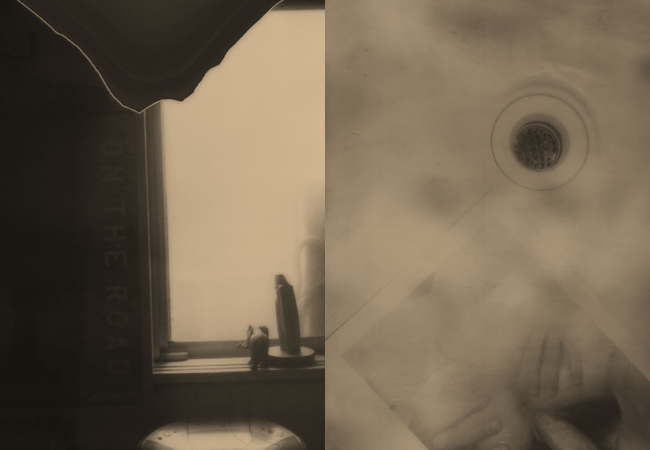
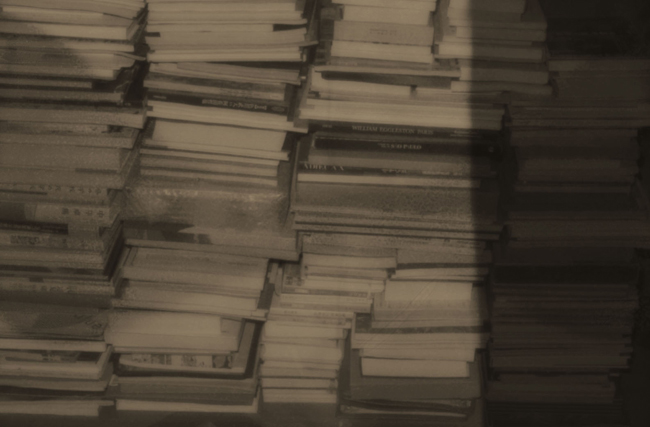
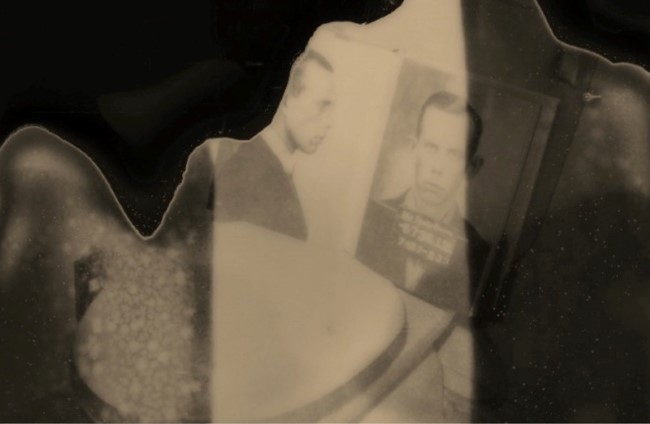
White and Vinegar is a project about memory, as defined by Moriyama’s maxim, quoted in the preface, that “A photograph is a fossil of light and time.”
White and Vinegar
White and Vinegar is a project about memory, as defined by Moriyama’s maxim, quoted in the preface, that “A photograph is a fossil of light and time.” Each spread follows a pattern, an excerpt of Moriyama’s writing from throughout the past four decades on the left accompanied by a recent photograph on the right. White and Vinegar is shot on a self-consciously nostalgic medium, the monochrome instant film developed by the Impossible Project to mimic original Polaroid stock. Like fossils, these unpredictable images with notoriously finicky emulsion are the result of a tactile physical process. Likewise, the shadowy silvertones of this monochrome are something we’ve come to accept as the photographic signifier of the past, flashback, of memory.
The images are classic Moriyama, stark black and white, grainy photographs of women in hotel rooms, miserable humans and animals on the street, menacing shadows of jet black, landscapes of trash, almost unreadable scenes of nature.
Often the writing is like a snapshot of a single thought: Moriyama’s philosophy of the nature of photography, his recollections and thoughts on Araki – “His loud voice and his thoughtfulness never changed. He is a natural born Tokyo city-boy and an infant prodigy” – or his reflection on how is a childhood spent loitering came to define his photographic modus operandi.
The silver monochrome is smoother than Moriyama’s more recognizable, high-grain, high-contrast style and portrays a world less tumultuous, but of muted, or mute, passion. The photos are mostly photos of photos: a photo of Taschen’s Complete History of Camera Work, a photo of a photo from his famous series of women in full-length fishnets, a painted-over print of woman naked on the floor across the fold from the recollection of Araki, a photo of penetration developing in a chemical bath.
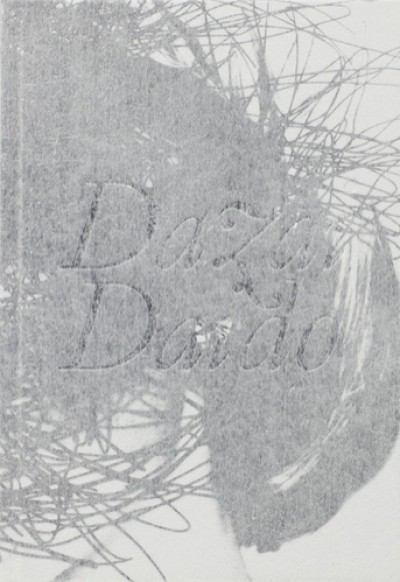
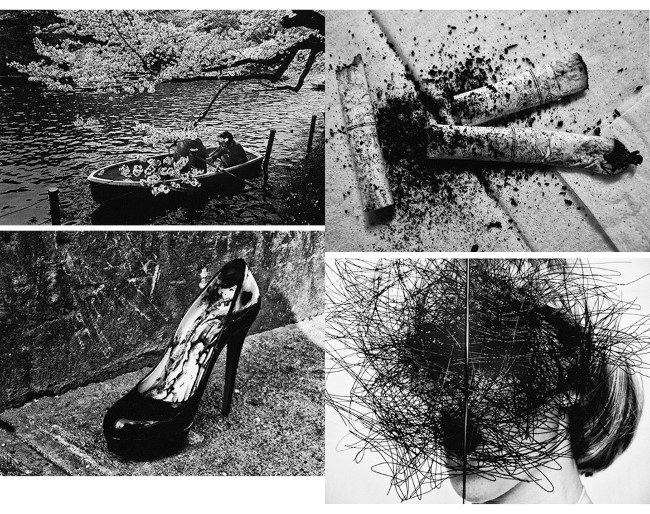


A small book with the dimensions of a novel, Dazai in fact houses a short story, Villon’s Wife, by Osamu Dazai (1909-1948) in new translation by Ralph McCarthy.
DAZAI
A small book with the dimensions of a novel, Dazai in fact houses a short story, Villon’s Wife, by Osamu Dazai (1909-1948) in new translation by Ralph McCarthy. With a romantic pedigree of morphine addiction, tuberculosis and suicide attempts, Dazai, is one of the most popular literary-fiction figures of post-war Japan. Villon’s Wife is the first-person tale of a woman struggling to survive in the wake of her husband’s abandonment. Dazai’s story is illustrated by Moriyama’s black and white photographs, selected in homage to Dazai, whom Moriyama cites as an influence.
The cover of the hardback book is lined with a soft, fuzzy fabric and the title is not written but only embossed into the photograph printed on the front cover. Inside, the images are classic Moriyama, stark black and white, grainy photographs of women in hotel rooms, miserable humans and animals on the street, menacing shadows of jet black, landscapes of trash, almost unreadable scenes of nature.
While holding Dazai, it’s evident the care and precision invested in the printing of the entire series. White and Vinegar is bound in a supple, white leather-like material and the text appears in embossed, black font. And although it’s packaging is less sensational, Mirage contains the most intriguing photo work. Together, these books are testament to the form and capability of art-books. Medium and message are generally recognized as inseparable yet each half of the equation is hardly given equitable attention. Creativity and originality are accorded exclusively to what we now call “content” and the form of the book suffers critical neglect, especially viewed in the light of the website, where there is no standard and new thinkers are always creating new ways to deliver image and text. MMM has created a series of books that succeed not just as ways to view and image, but special physical objects in their own right, which appeal to the basic and lasting pleasure of physicality.
Owen Campbell is an an artist and writer from Wilkinsburg, PA.
FOLLOW on Twitter @OwynnKampbell and at http://artbasel.us/
EXPLORE ALL DAIDO MORIYAMA ON ASX
(All rights reserved. Text @ Owen Campbell. Images @ Daido Moriyama.)
